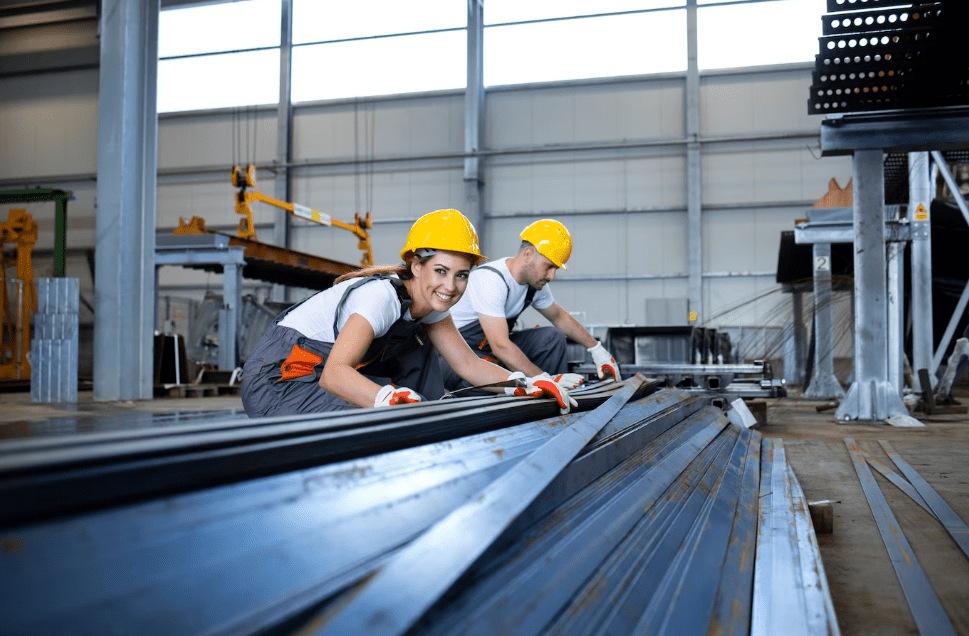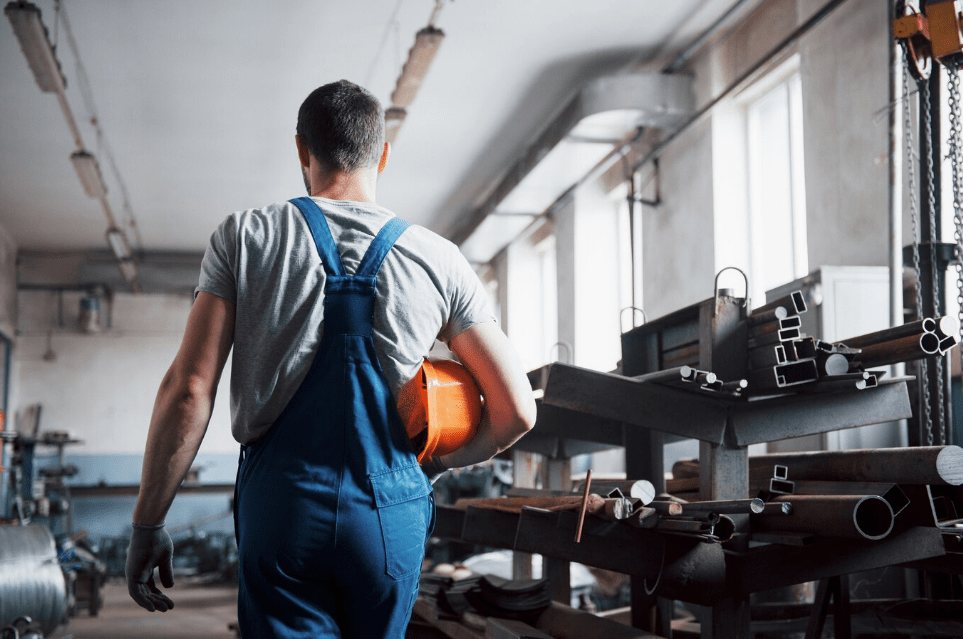Protecting your vehicles, tools, and other valuable possessions is crucial, and a metal garage offers a compelling solution. But is it the right investment for you? This comprehensive guide dissects the pros and cons of metal garages, considering their cost, durability, functionality, and potential impact on your property value. Explore real-world scenarios, weigh the financial implications, and discover if a metal garage stands as a solid addition to your property.

Let’s talk about metals in simple terms
Unveiling the Value of Steel
In today’s world, where space is often at a premium and protecting our belongings is paramount, finding the right storage solution can be a challenge. Enter the metal garage, a versatile and durable structure that promises affordability, longevity, and adaptability. But is it truly a sound investment? This comprehensive guide delves into the intricate world of metal garages, exploring their potential to enhance your property and serve your needs.
Defining the Steel Haven
A metal garage, also known as a prefabricated metal building, is a pre-engineered structure typically constructed from galvanized steel panels. These structures offer a range of uses, transcending the traditional image of a car haven. Here’s a glimpse into their versatility:
- Vehicle Sanctuary: From protecting your prized car from the elements to housing a fleet of motorcycles or recreational vehicles, metal garages provide secure and weatherproof shelters.
- Workshop Wonderland: Whether you’re a seasoned mechanic, a budding artist, or a DIY enthusiast, a metal garage can be transformed into your personal workshop, complete with ample space for tools, equipment, and creative endeavors.
- Storage Sanctuary: From seasonal decorations and outdoor gear to bulky furniture and cherished possessions, metal garages offer a spacious and secure solution for all your storage needs.
The Investment Conundrum
The question of whether a metal garage is a good investment hinges on a multitude of factors. While its initial cost might seem appealing, durability, functionality, and potential impact on property value must be carefully considered. This guide will dissect each of these aspects, providing you with the knowledge and tools to make an informed decision.
Key Factors to Consider: As you embark on your metal garage journey, keep these critical factors in mind:
- Cost: We’ll compare the initial investment of a metal garage with other materials like wood, brick, and concrete, analyzing both construction costs and long-term maintenance expenses.
- Durability: Explore the inherent strength of steel and its ability to withstand harsh weather conditions like fire, wind, and snow, contrasting it with the susceptibility of other materials.
- Functionality: Dive into the flexibility of metal garages, from size and design options to customization possibilities. We’ll unveil their potential for multi-purpose use and adaptability to various terrains.
- Resale Value: Demystify the impact a metal garage can have on your property’s value. We’ll analyze studies and statistics, considering factors like size, design, and neighborhood trends.

Exploring the Benefits of Metal Garages
Affordability
Metal garages often shine when it comes to affordability, making them a compelling choice for budget-conscious homeowners. Let’s dive deeper into the cost aspects:
Comparing Costs
- Metal vs. Wood: While wood can be cheaper upfront, its susceptibility to rot and weather damage necessitates repairs and replacements, ultimately driving up long-term costs. Metal garages, on the other hand, require minimal maintenance, keeping costs low over time.
- Metal vs. Brick: Brick garages boast a classic look but come at a significantly higher price point due to material and labor costs. Metal offers a more attractive price tag while still providing sturdy protection.
- Metal vs. Concrete: Concrete garages, similar to brick, offer durability but incur substantial construction costs. Metal garages provide a comparable level of protection at a fraction of the price.
- DIY potentials: With DIY projects, significant savings are possible. However, professional installation ensures proper assembly and adherence to building codes, offering peace of mind and potentially faster completion.
- Prefab vs. Custom: Prefabricated metal garages come in standard sizes and designs, offering lower costs and quicker installation. Custom units provide greater flexibility but lead to higher prices. Consider your specific needs and budget when choosing between these options.
Long-Term Cost Savings
Beyond the initial investment, metal garages offer several advantages that translate to long-term financial benefits:
- Low Maintenance: Unlike wood, metal doesn’t require regular painting, sealing, or repairs to maintain its structural integrity and appearance. This significantly reduces future maintenance costs compared to other materials.
- Energy Efficiency: Metal reflects heat better than other materials, reducing the need for cooling in warmer climates. Additionally, metal garages can be easily insulated, lowering heating costs in colder areas.
- Durability: Metal garages withstand harsh weather conditions like heavy rain, snowfall, and strong winds, minimizing the risk of damage and the need for repairs. This enhances their long-term value and reduces financial burden.
Durability: Weathering the Storm
When it comes to battling the elements, metal garages stand firm like seasoned warriors. Let’s delve into their impressive resistance to
- Fiery Fury: Unlike their wooden counterparts, metal garages boast exceptional fire resistance. Steel, the most common material, has a melting point exceeding 2,500°F, offering significantly more protection against accidental fires or external blazes. This can provide peace of mind knowing your vehicles and valuables are shielded from fiery harm.
- Wind’s Wrath: Metal garages shrug off wind’s bluster with remarkable resilience. Their sturdy frames, typically constructed from pre-engineered steel components, are designed to withstand even high winds. They are less susceptible to warping, cracking, or collapsing compared to wood structures, which can become vulnerable during storms. This robust stance ensures your possessions remain safe even when the wind howls outside.
- Snow’s Burden: Heavy snowfall poses no threat to a metal garage’s structural integrity. The strength of steel allows the roof to bear significant weight without caving in. Plus, the smooth, sloped design often employed in metal garages facilitates easy snow removal, preventing accumulation and potential problems. This robust design keeps your garage safe and accessible even during winter’s harshest moments.
- Beyond Nature’s Fury: Durability extends beyond natural elements. Metal garages are resistant to pests like termites and rodents, which can wreak havoc on wooden structures. They are also less susceptible to rust and corrosion thanks to advancements in protective coatings and treatments. This comprehensive resistance means your investment remains in top condition for years to come.
Contrasting the Competition
Compare this resilience to traditional materials:
- Wood: Vulnerable to fire, prone to warping and cracking in extreme weather, susceptible to pest damage and rots over time.
- Concrete: While fire-resistant, concrete structures are expensive, require extensive construction, and lack the flexibility of metal garages.
Lifespan and Minimal Decay
With proper care and maintenance, metal garages can last for decades, sometimes even exceeding 50 years. This longevity translates to long-term value and savings compared to structures requiring frequent repairs or replacements. The minimal decay experienced by metal ensures your investment retains its structural integrity and functionality throughout its lifespan.
Functionality: Unleashing the Multipurpose Potential of a Metal Garage
When it comes to functionality, metal garages stand out as true chameleons of the building world. Here’s a deeper dive into the various ways they can adapt to your specific needs:
Size Flexibility: Unlike traditional garages with fixed dimensions, metal structures offer a remarkable range of size options. You can choose a compact single-carport unit for basic storage or expand to a multi-vehicle behemoth to house your entire fleet. Need a spacious workshop? Go big! Craving a cozy yoga studio? Scale it down! This size flexibility allows you to perfectly match your needs and available space.
Design Variety: Gone are the days of bland, boxy metal garages. Today, you can choose from a variety of roof styles (gable, hip, A-frame) and cladding options (metal panels, vinyl siding) to create a structure that complements your property’s aesthetics. Some manufacturers even offer pre-designed models with architectural details like windows and porches, further enhancing the visual appeal.
Customization Paradise: Unleash your inner architect! Metal garages are highly customizable, allowing you to tailor them to your specific needs and hobbies. Want a dedicated woodworking space? Add ventilated walls and dust collection systems. Dreaming of a home gym? Install sturdy racks and flooring mounts. Need secure storage for your motorcycle? Opt for reinforced doors and security features. Whether it’s plumbing and electrical work for a fully functional space or specific shelving and storage solutions, the customization options are virtually limitless.
Multi-Purpose Powerhouse: Think beyond just vehicle storage! Metal garages can transform into versatile spaces that serve multiple purposes simultaneously. Need a home office with quiet seclusion? Create a dedicated room within the structure. Have an artistic side? Convert it into a painting studio or music room. Don’t forget about seasonal possibilities – an enclosed patio in the summer, a festive party space in the winter. With a little creativity, your metal garage can become a valuable extension of your living space, catering to a variety of needs throughout the year.
Installation Ease and Terrain Adaptability: Compared to traditional brick or concrete construction, metal garages offer a significant advantage in terms of installation ease. Many pre-fabricated models can be assembled quickly and efficiently, saving you time and labor costs. They also require minimal groundwork, making them suitable for various terrains, from level backyards to sloped driveways. This allows for greater flexibility in placement and minimizes site preparation challenges.
Potential Increase in Property Value
Owning a metal garage doesn’t just offer practical benefits; it can also positively impact your property’s value, making it a wise investment. Here’s how:
Increased Appeal to Buyers
- Storage Solution: In today’s world, storage space is king. Many potential buyers actively seek homes with garages, especially in areas with harsh weather or limited street parking. A metal garage provides ample secure storage for vehicles, tools, equipment, and other belongings, a major selling point for many.
- Curb Appeal: Contrary to outdated stereotypes, modern metal garages offer a range of design options, including vertical roofs, various colors, and even decorative trims. Choosing a design that complements your home’s style can enhance its overall curb appeal and attract more buyers.
- Multi-functionality: Beyond vehicle storage, metal garages offer versatility. Depending on size and customization, they can transform into workshops, home gyms, art studios, or even additional living spaces. This flexibility increases the property’s potential uses and caters to a wider range of buyers.
Studies and Statistics
Research backs up the value-adding potential of garages. A Florida State University study found that the presence of a standard-sized garage increased a home’s value by 13% compared to similar homes without one. Other studies suggest an average value increase of $15,000-$30,000 for a two-car garage. While these are general estimates, the actual impact depends on specific factors:
Consideration 1: Size and Design
- Size Matters: Larger garages offer more storage and multi-functionality, potentially leading to higher value increases. However, exceeding neighborhood norms might not translate to higher value, so finding the right balance is crucial.
- Design Matters: An aesthetically pleasing design that complements your home’s style will resonate better with buyers and potentially boost value. Opting for modern finishes, color options, and unique touches can set your garage apart.
Consideration 2: Neighborhood Trends
- Garage Expectations: In areas where garages are standard, a lack of one can significantly hinder your property’s marketability and value. Conversely, in areas with limited garage availability, yours becomes a valuable asset.
- Community Aesthetics: Aligning your garage’s design with the overall neighborhood style is key. A modern metal garage might clash with a traditional brick neighborhood, potentially impacting value. Research local trends and regulations to ensure a harmonious fit.

Addressing the Potential Drawbacks
Initial Investment
While metal garages boast many advantages, their initial cost can be a hurdle compared to other materials.
- Higher upfront cost: Acknowledge that metal garages might initially cost more than wood-framed counterparts, especially when considering factors like size, thickness, and customization. Quantify the potential cost difference with real-world examples, highlighting the range based on size and features.
- Customization impact: Explain how extensive customization options, like additional doors, windows, or insulation, can significantly increase the price tag.
- Size matters: Emphasize the direct correlation between size and cost. Provide a table or chart showcasing how price typically increases with square footage.
- Offsetting costs: Offer practical strategies to offset the initial investment. Discuss financing options available from manufacturers or lenders, emphasizing potential benefits like low interest rates or extended payment plans. Explore the potential cost savings of DIY construction for those with the skills and equipment. However, clearly highlight the importance of proper permits, safety considerations, and potential challenges for first-time builders.
Aesthetics
While functionality reigns supreme for many, the industrial appearance of metal garages can be a concern for those prioritizing curb appeal.
- Curb appeal concerns: Acknowledge the potential lack of traditional charm compared to brick or wooden structures. Offer examples of how a basic metal garage can detract from the aesthetics of a well-maintained home.
- Design options: Highlight the growing availability of design options like different colors, finishes, roof styles, and even cladding materials like faux wood or stone. Provide visual examples showcasing how these elements can significantly improve the visual appeal.
- Finishing touches: Discuss the impact of additional touches like landscaping, decorative accents, and strategic placement of plants or trees to soften the industrial look and blend the garage with the surrounding environment.
- Neighborhood harmony: Emphasize the importance of considering neighborhood style and regulations. Advise potential buyers to research any restrictions on materials, color palettes, or design elements to ensure their metal garage complies with community standards.
Local Regulations and Permits
Navigating local building codes and obtaining permits can add complexity to the metal garage installation process.
- Research and compliance: Stress the importance of thoroughly researching local building codes and securing necessary permits before investing. Direct readers to relevant online resources or suggest contacting the local building department for specific guidance.
- Potential restrictions: Highlight common restrictions that might impact metal garage installation, such as size limitations, placement requirements, and specific design elements that might not be allowed. Provide concrete examples based on typical regulations.
- Consulting authorities: Encourage potential buyers to consult with local authorities early in the planning process to avoid delays or costly changes due to non-compliance. Explain the benefits of professional guidance in navigating the permit process.
Environmental Impact
Steel production and potential toxicity concerns raise questions about the environmental impact of metal garages.
- Steel production concerns: Address the valid concerns about the energy consumption and carbon emissions associated with steel production. Briefly explain the industry’s efforts towards sustainability, including the use of recycled steel and energy-efficient production methods.
- Potential toxicity: Acknowledge the potential presence of harmful chemicals in some paints or coatings used on metal garages. Encourage buyers to choose eco-friendly, low-VOC options and emphasize responsible disposal practices for waste materials.
- Sustainable practices: Discuss advancements in sustainable metal production, highlighting the use of recycled materials and renewable energy sources. Showcase examples of manufacturers committed to eco-friendly practices.
- Comparison with other materials: Briefly compare the environmental impact of metal garages to other commonly used building materials like wood and concrete, considering factors like resource depletion, manufacturing processes, and lifecycle analysis.

Real-World Scenarios and Decision-Making Factors
Scenario 1: Parking and Storage for Vehicles
- Cost-effectiveness: Compare the monthly cost of renting a storage unit to the annual cost of owning and maintaining a metal garage. Factor in the initial investment, potential financing options, insurance costs, and long-term depreciation. Quantify the difference to see if owning becomes more economical after a certain timeframe.
- Security and protection: Highlight the security benefits of a metal garage compared to storing your vehicle in a shared storage unit. Discuss features like locking mechanisms, security doors, and potential alarm systems. Mention protection from weather elements like hail, snow, and sun damage, potentially affecting vehicle value and lifespan.
- Long-term value and resale appeal: Analyze the potential increase in property value a metal garage adds. Cite local market trends and statistics on how garages impact overall property value. Discuss how a well-maintained and strategically placed metal garage can attract potential buyers, especially those needing additional storage or parking space.
Scenario 2: Creating a Workshop or Hobby Space
- Need for dedicated space: Evaluate the current setup for your workshop or hobby space. Consider if using another room in the house is viable or if dedicated space is crucial for safety, organization, and noise reduction. Analyze how a metal garage can fulfill specific needs, like storing equipment, having dedicated workbenches, or maintaining proper ventilation for woodworking or painting.
- Cost savings: Calculate the potential cost savings of having a dedicated workspace compared to outsourcing projects or purchasing specific equipment for occasional use. Consider the long-term benefit of having a space to pursue hobbies and potentially generate income through DIY projects or craft sales.
- Customization and flexibility: Highlight the customizable options of metal garages, allowing you to tailor the space to your specific needs. Discuss adding features like workbenches, shelving, electrical outlets, and climate control options for optimal functionality. Mention the flexibility of expanding the space in the future if your hobby evolves.
- Impact on property value and future usage: While primarily a personal benefit, consider the potential impact on property value if you create a well-designed and equipped workshop. Discuss how it might attract specific buyers looking for a turnkey hobby space. However, emphasize the primary motivation should be meeting your personal needs and enjoying the space.
Scenario 3: Expanding Existing Storage Capacity
- Cost comparison: Compare the upfront and long-term costs of adding a metal garage to expanding the house. Analyze factors like construction costs, permits, and potential property value impact. Consider the cost of ongoing maintenance for each option.
- Convenience and accessibility: Evaluate the convenience of access to a detached metal garage compared to an expanded house area. Consider the time and effort involved in accessing stored items in each scenario. Discuss the potential need for additional walkways or access points for the garage.
- Aesthetics and neighborhood regulations: Research local building codes and neighborhood regulations regarding detached structures. Analyze how different metal garage designs and finishes can blend with the overall aesthetic of your property and neighborhood. Consider how a poorly designed garage can negatively impact curb appeal and property value.
- Future plans and potential: Analyze your future needs and plans for additional storage space. Consider if a metal garage can offer long-term adaptability, potentially serving as a workshop, home gym, or guest space in the future. Discuss how expanding the house might restrict future flexibility depending on design choices.

Answering the Question: Is It Right for You?
Deciding whether a metal garage is the right investment hinges on understanding your specific needs and priorities. While the previous sections explored the general pros and cons, here’s a deeper dive into how these factors play out based on individual circumstances:
Consider Your Needs
- What primary purpose will the garage serve? (Vehicle storage, workshop, storage unit, additional living space)
- How much space do you truly require? (One car, multiple vehicles, large equipment, specialized hobby area)
- Do you foresee future needs changing? (Growing family, expanding hobbies, potential business ventures)
Align Needs with Benefits
- Budget-conscious? Metal garages offer long-term savings compared to renting storage or building traditional alternatives.
- Seeking durability? Steel’s resistance to weather and pests ensures your belongings stay protected.
- Need flexibility? Customize sizes, designs, and features to perfectly suit your specific needs.
- Hoping to boost property value? Studies show well-designed metal garages can increase appeal to potential buyers.
Weigh the Drawbacks
- Upfront cost: While potentially cheaper in the long run, the initial investment can be higher than some materials.
- Aesthetics: Traditionalists might find metal garages less visually appealing than brick or wood.
- Regulations: Research local building codes for size, placement, and design restrictions.
- Environmental impact: Consider sustainable practices employed by manufacturers and recycling options.
Personalize Your Decision
- Budget: Determine your available funds and explore financing options if needed.
- DIY skills: Can you save on construction costs by building it yourself?
- Neighborhood aesthetics: Align your design with local styles and regulations.
- Long-term plans: Will you need the space in the future, or plan to sell the property?
Ultimately, the decision rests on your unique circumstances. If the benefits resonate with your needs and budget aligns with the investment, a metal garage might be the perfect solution. However, if aesthetics are paramount or building regulations pose significant challenges, exploring alternative options might be prudent.
Conclusion
As we close this exploration, the question of “Is a metal garage a good investment?” lingers. The answer, much like the sturdy structure itself, rests on a solid foundation of your unique needs and priorities.
Remember, affordability doesn’t exist in a vacuum. A budget-friendly metal garage might not translate well if it clashes with your neighborhood’s aesthetics or doesn’t fulfill your long-term vision. Conversely, a customized dream garage might prove an invaluable asset, boosting your property value and enriching your lifestyle.
Ultimately, the decision hinges on balancing your budget with your needs and future plans. If you crave secure storage, a dedicated workshop, or simply added value, a metal garage can be a worthwhile investment. Just ensure it aligns with your neighborhood regulations, aesthetic preferences, and long-term goals.
Think of this not as a fleeting purchase, but as an extension of your living space. Consider how it will integrate into your life, enhance your property, and potentially serve you for years to come. With careful planning and informed choices, a metal garage can transform from a mere structure into a wise investment, standing sentinel over your vehicles, possessions, and dreams.


